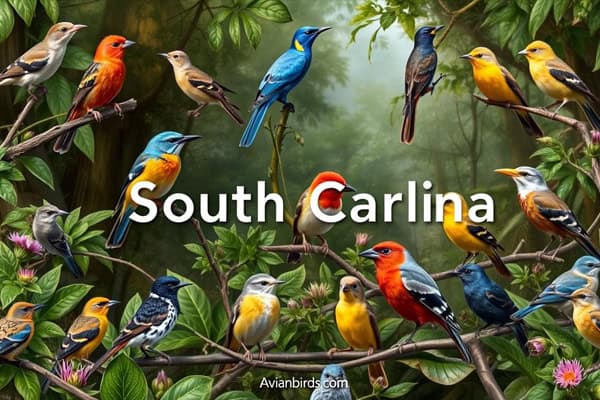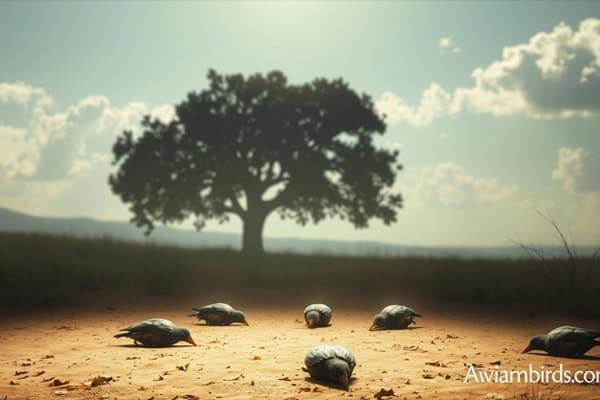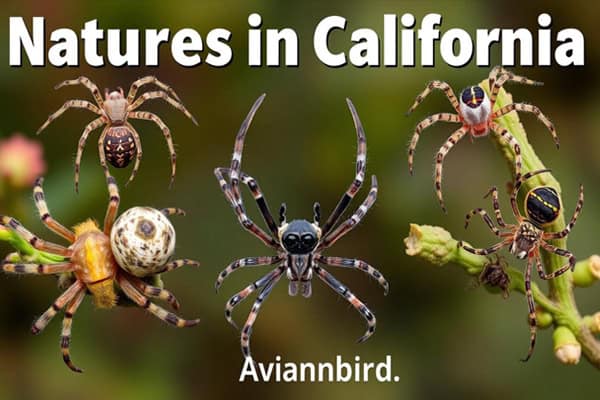29 Common Birds in South Carolina ( ID Guide With Pictures)
Did you know South Carolina is home to 449 birds of species? This makes our state a top spot for birdwatching. We’ll look at 29 common birds you might see in your backyard or park. This guide aims to improve our bird identification skills and show their importance in our ecosystem.
Let’s dive into the world of South Carolina’s birds. We’ll use vivid images and detailed descriptions to help us spot these amazing creatures. From the bright Northern Cardinal to the Carolina Wren’s playful nature, each bird has its own special qualities.
Most Common Birds in South Carolina
We often enjoy watching common birds in South Carolina. Surveys and local sightings show the variety of birds here. Each bird is important for our ecosystem, making nature more enjoyable for us.
Some of the most common birds include the Northern Cardinal, American Crow, and Carolina Wren. Learning to recognize these birds helps us in birdwatching and supports science. By improving our bird identification, we show our love for these birds and help protect them.
Knowing their habits and homes helps us join the effort to save these species for the future. This community of bird lovers works together to protect these birds.
| Bird Species | Identification Characteristics | Habitat |
|---|---|---|
| Northern Cardinal | Bright red plumage (males), distinctive crest | Gardens, parks, and woodlands |
| American Crow | All black feathers, loud cawing sound | Urban areas, fields, and forests |
| Carolina Wren | Brown body with a distinctive curved tail | Thickets, yards, and woodlands |
Exploring common birds in South Carolina deepens our connection with nature. We invite you to join us in birdwatching. It improves our skills and makes us appreciate nature’s beauty more.
1. Northern Cardinal
- Scientific Name: Cardinalis cardinalis
- Size: 21–23 cm (8.3–9.1 in)
- Weight: 38–65 g (1.3–2.3 oz)
- Lifespan: 3–15 years (up to 28 years in the wild)
- Diet: Seeds, fruits, and insects; known for their strong beaks, which are well-suited for cracking seeds.
In South Carolina, the Northern Cardinal is a standout among birds. It’s known for its beauty and charm. People love its bright look and sweet songs. Let’s dive into what makes this bird so special.

Identification Characteristics
It’s easy to spot a Northern Cardinal because of its unique look. Males wear bright red feathers and have a black mask. They also have a tall crest and bright colors. Females are less flashy but still stand out with their buff and brown feathers and black mask.
Both males and females have strong, cone-shaped bills. These are perfect for eating their varied diet.
Feeding Habits
Northern Cardinals love to eat seeds and fruits. They enjoy a mix of foods, including:
- Sunflower seeds
- Corn
- Berries
They can be seen eating in trees or on the ground. Also, They use their strong bills to open hard seeds. Their songs add joy to our gardens and parks, showing they’re around.
| Characteristics | Male Northern Cardinal | Female Northern Cardinal |
|---|---|---|
| Plumage Color | Vibrant Red | Buff and Brown |
| Crest | Prominent | Less pronounced |
| Bill Shape | Stout, Cone-shaped | Stout, Cone-shaped |
| Mask Color | Black | Black |
2. American Crow
- Scientific Name: Corvus brachyrhynchos
- Size: 38–50 cm (15–20 in)
- Weight: 320–620 g (11.3–21.8 oz)
- Lifespan: 7–8 years (up to 20 years in the wild)
- Diet: Omnivorous; includes insects, seeds, fruits, carrion, and human food scraps.
The American Crow is a bird known for its smarts and ability to adapt. It has all-black feathers and looks different from other birds. Learning about the American Crow helps us better identify birds and appreciate their cleverness.

Identification Characteristics
The American Crow has a thick bill and pointed wings. It can grow up to three feet wide. Its feathers shine in the sun, showing purple or blue colors. They often hang out in pairs or small groups and make a loud cawing sound.
Diet and Feeding Behavior
The American Crow eats many different foods. Their diet includes:
- Seeds
- Nuts
- Insects
- Carrion
These birds can find food in cities and the countryside. They work together to find food and watch out for dangers. This shows how smart and social they are.
3. Mourning Dove
- Scientific Name: Zenaida macroura
- Size: 24–30 cm (9.1–11.8 in)
- Weight: 110–170 g (3.9–6.0 oz)
- Lifespan: 1–3 years (up to 8 years in the wild)
- Diet: Primarily seeds, but also fruits and some grains.
The Mourning Dove is a common sight in South Carolina. It’s known for its soft cooing and elegant flight. Birdwatchers and casual observers love to see it. It has a slender body and a long pointed tail, making it a favorite in gardens and backyards.

These doves are often seen on the ground or on wires, looking peaceful. They eat seeds they find on the ground. This shows how well they adapt to different places.
Watching Mourning Doves can make us feel calm and connected to nature. They bring peace right to our homes. It’s a way to enjoy the beauty of nature up close.
4. Carolina Wren
- Scientific Name: Thryothorus ludovicianus
- Size: 12.5–14 cm (4.9–5.5 in)
- Weight: 20–30 g (0.7–1.1 oz)
- Lifespan: 2–6 years
- Diet: Insects, spiders, and seeds; known for its distinctive loud song and curious behavior.
The Carolina Wren enchants us with its lively song and charming personality. It has a reddish-brown body with white markings. It loves to explore, making it fun to watch in different places.
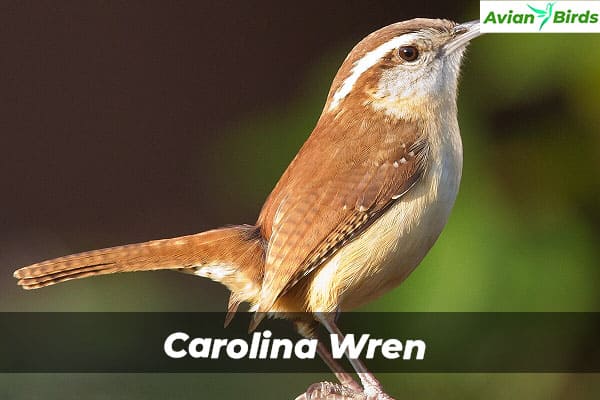
Singing and Behavior Patterns
The Carolina Wren sings a spirited song to announce its presence. You can hear them singing in shrubs or on low branches. Their songs make our surroundings more lively. Both males and females are curious and confident, exploring with great enthusiasm.
Foraging Techniques
Carolina Wrens are adaptable foragers. They search through thick foliage and leaf litter for insects and berries. Their long bills help them get food from tight spots. Watching them hop around low shrubs is thrilling for birdwatchers.
5. Northern Mockingbird
- Scientific Name: Mimus polyglottos
- Size: 20–25 cm (7.9–9.8 in)
- Weight: 55–80 g (1.9–2.8 oz)
- Lifespan: 3–4 years (up to 8 years in the wild)
- Diet: Insects, fruits, and berries; known for its ability to mimic the songs of other birds and various sounds.
The Northern Mockingbird is a bird known for its amazing singing skills. It has a long tail and gray feathers, making it easy to spot. These birds are often seen singing from high spots. They are known for mimicking other birds and even sounds from their environment.
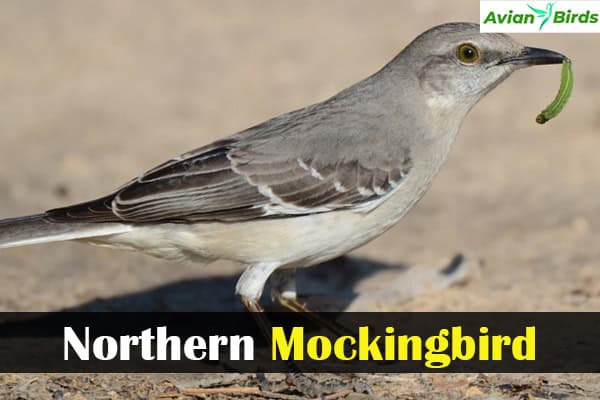
In South Carolina, you can find these birds in gardens and parks. They eat a variety of foods, including fruits and bugs. Their songs add to the beauty of our outdoor areas, making them a favorite among birds.
| Characteristic | Description |
|---|---|
| Scientific Name | Mimus polyglottos |
| Size | 8.5 to 11 inches long |
| Wingspan | 12 to 15 inches |
| Color | Gray above, white underparts |
| Vocal Ability | Mimics other bird calls and sounds |
| Diet | Fruits, insects, and spiders |
Birdwatching lets us see how special the Northern Mockingbird is. Their amazing singing and varied diet make them a favorite among us.
6. Tufted Titmouse
- Scientific Name: Baeolophus bicolor
- Size: 14–16 cm (5.5–6.3 in)
- Weight: 18–24 g (0.63–0.85 oz)
- Lifespan: 2.1–13 years
- Diet: Insects, seeds, and nuts; known for its curious behavior and distinctive tufted crest.
The Tufted Titmouse brightens our gardens and backyards with its charm. It has a special tufted crown and gray feathers. Spotting this bird at feeders is easy, especially in cold months when it eats suet or seeds.
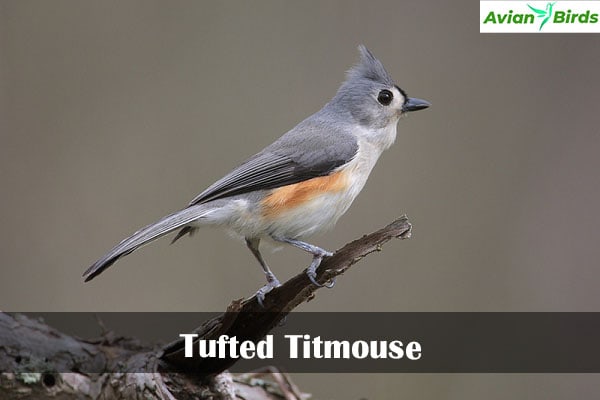
Physical Traits
Knowing how the Tufted Titmouse looks makes birdwatching more fun. It has:
- Gray upperparts with soft feathers
- Bright white underparts that stand out
- A small, pointed crest on its head
- A black patch above its bill
- A short tail that helps it move quickly
These features help us recognize the Tufted Titmouse and make it cute. Watching it fly or eat at a feeder is a joy for bird lovers.
7. Blue Jay
- Scientific Name: Cyanocitta cristata
- Size: 22–30 cm (8.7–11.8 in)
- Weight: 70–100 g (2.5–3.5 oz)
- Lifespan: 7–10 years (up to 26 years in captivity)
- Diet: Omnivorous; feeds on nuts, seeds, fruits, insects, and occasionally small vertebrates.
The Blue Jay catches our eye with its bright blue feathers and unique black spots. These birds amaze us with their smarts and interesting ways of acting. They are very adaptable and clever, making them fun to watch.

Behavior and Intelligence
Blue Jays show off their smarts in many ways. They use tools to get food, which is a rare skill in birds. They also have strong social bonds and work together in their groups.
These birds make a lot of noise too. Their loud calls fill the air, helping them talk to each other. This helps them stay safe and warn others of dangers.
Blue Jays also help our environment. They spread acorns, which helps forests grow and brings more life to the area. They show how different species work together to keep nature balanced.
| Characteristic | Description |
|---|---|
| Coloration | Striking blue, black, and white plumage. |
| Intelligence | Demonstrates problem-solving skills and tool use. |
| Social Behavior | Forms close-knit groups and communicates through diverse calls. |
| Diet | Enjoys seeds, nuts, and insects, often visiting backyard feeders. |
| Ecosystem Role | Disperses acorns, aiding in forest growth and biodiversity. |
8. Pine Warbler
- Scientific Name: Setophaga pinus
- Size: 12.5–14 cm (4.9–5.5 in)
- Weight: 9–12 g (0.32–0.42 oz)
- Lifespan: 3–5 years
- Diet: Primarily insects and seeds, particularly those from pine trees.
The Pine Warbler brightens our pine forests with its vibrant yellow color. It’s easy to spot because of its bright look. Its song in spring makes it a favorite among birdwatchers.

Its olive-green back and white wing bars help us spot it easily. These features make it stand out in the trees.
This bird is interesting to watch because of its unique way of eating. It picks insects from tree bark and seeds from pine cones. This helps keep its home balanced and healthy.
Its eating habits show how adaptable and important it is. It helps control insect numbers, which is good for plants and other animals too.
Birdwatching in South Carolina
Birdwatching lets us connect with nature and enjoy wildlife’s beauty. South Carolina’s varied landscapes, from coastal wetlands to mountains, are perfect for many bird species. It’s great for both experienced and new birdwatchers.
Backyard birding teaches us about local ecosystems and the role of birds in them. This hobby brings joy and teaches us to protect these amazing birds and their homes. By sharing what we learn about South Carolina birds, we help protect them and spread the love for nature.
Birdwatching lets us enjoy nature’s beauty and learn about birds’ importance in our world. Every bird we see makes our lives richer and encourages us to value the wildlife around us.
Check Our Previous Articles:
| Green Birds in Sarasota Florida |
| Types of Conures |
| Apple Cider Vinegar In Bird Baths |
| Scary Bird Species |
| Blue Colored Birds |
Conclusion
Reflecting on our birdwatching journey in South Carolina, we feel lucky to see so many different birds. From the bright Northern Cardinal to the smart American Crow, each bird makes our world more colorful. Their songs, like the Carolina Wrens, fill the air with music.
Our love for birdwatching helps us understand and value these amazing birds more. By learning to identify them and making our yards bird-friendly, we help protect their homes. This way, we ensure that future generations can also enjoy their beauty.

